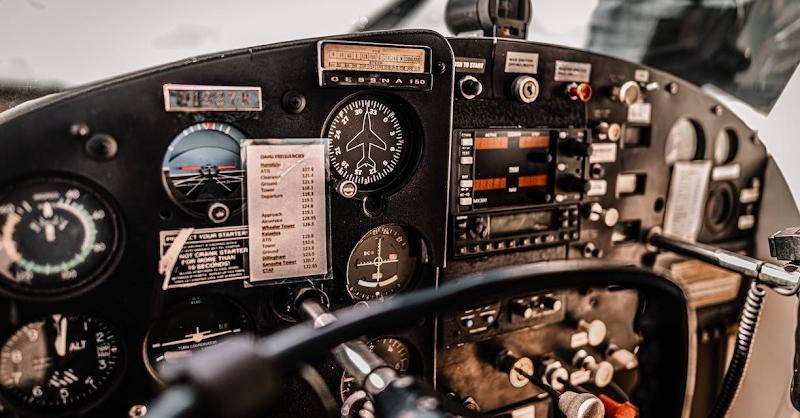In the aviation sector, guaranteeing an aircraft’s dependability and safety is crucial. Maintaining this requires continuous replacement of necessary parts, which is a crucial element of the process. This guide will explore five key aircraft maintenance parts crucial for the safety and functionality of these high-flying machines.
1. Aviation Tires:
Aviation tires play a critical role in the safety and performance of aircraft during takeoff and landing. These specialized tires are designed to withstand immense stress and pressure associated with the dynamic forces of takeoff and the subsequent landing. It is essential to regularly examine and maintain aircraft tires to spot any symptoms of corrosion, wear, or irregular tread patterns. Proper traction on the runway is crucial for a successful takeoff, as it enables the aircraft to accelerate smoothly and reach the required speed for lift-off. Pilots and ground crews closely monitor tire conditions, ensuring that any worn or damaged tires are promptly replaced to maintain optimal safety standards. The reliability and integrity of aviation tires significantly contribute to the overall safety and efficiency of the takeoff process.
2. Brake Components:
The brake components of an aircraft are integral to its overall safety, particularly during the critical phases of takeoff and landing. These components include brake pads, disks, and hydraulic systems, all of which undergo significant stress and wear during ground operations. To guarantee these parts are reliable and functional, thorough and routine inspections are necessary. Brake pads and disks may experience wear over time due to the friction generated during landings and braking maneuvers. Scheduled inspections help identify any signs of deterioration or uneven wear, prompting timely replacements to maintain optimal braking performance. The hydraulic systems that facilitate the application of brakes also require careful monitoring to address any potential issues that may compromise their efficiency. By prioritizing the maintenance of brake components, aviation professionals contribute to the overall safety and operational excellence of the aircraft during takeoff and landing procedures.
3. Engine Components:
Ensuring the optimal performance and safety of aircraft engines involves a comprehensive understanding of their intricate components. Aircraft engines are complex systems that demand meticulous maintenance practices. Regular inspections and proactive replacement of crucial components such as spark plugs, filters, and turbine blades are imperative. These measures not only contribute to the overall reliability of the engine but also play a pivotal role in averting potential failures during flight. In the aviation sector, where accuracy and safety are critical, the following maintenance procedures are necessary to ensure that aircraft operate as intended. Additionally, considerations like the use of specific hydraulic fluids, including Skydrol, further underscore the commitment to maintaining the highest standards in aviation safety and performance.
Navigation lights on an aircraft are integral for operational safety, particularly in low visibility conditions. These lights, encompassing position lights, anti-collision lights, and landing lights, enhance the aircraft’s visibility to both fellow pilots and air traffic controllers. Part of basic maintenance is making sure that navigation lights are checked and replaced regularly. Positioned on the wings and tail, position lights to aid in determining the aircraft’s orientation, while anti-collision lights mounted on the fuselage reduce the risk of mid-air collisions. Additionally, landing lights, located at the front of the aircraft, improve visibility during takeoff and landing. Scheduled inspections ensure these lights comply with aviation regulations by emitting the correct color and intensity, with any signs of malfunction prompting immediate attention and replacement. Well-maintained navigation lights significantly contribute to overall flight safety, facilitating accurate assessments of an aircraft’s position, heading, and status, especially in challenging weather conditions or during nighttime operations.
5. Flight Control Surfaces:
Flight control surfaces, encompassing ailerons, elevators, and rudders, play a pivotal role in ensuring stable and responsive aircraft control. These surfaces, located on the wings and tail, allow the pilot to maneuver the aircraft around its three axes—roll, pitch, and yaw. Regular inspections are crucial to identifying any signs of wear, corrosion, or damage to these components. Ailerons control the aircraft’s roll, elevators manage pitch, and rudders handle yaw. Proper maintenance involves checking for proper alignment, freedom of movement, and structural integrity. If any issues are detected during routine inspections, prompt replacement of worn or damaged parts is crucial to uphold the aircraft’s ability to respond accurately to pilot inputs. This meticulous attention to flight control surfaces ensures the aircraft’s agility, stability, and overall safety during various phases of flight.
Conclusion:
Safety in aviation hinges on the meticulous care and replacement of essential maintenance parts. By adhering to rigorous maintenance schedules and promptly replacing worn components, the aviation industry upholds its commitment to ensuring the safety of passengers and crew. This dedication to rigorous maintenance not only safeguards the well-being of passengers and crew but also exemplifies the aviation industry’s unwavering commitment to upholding the highest standards of safety and reliability.






